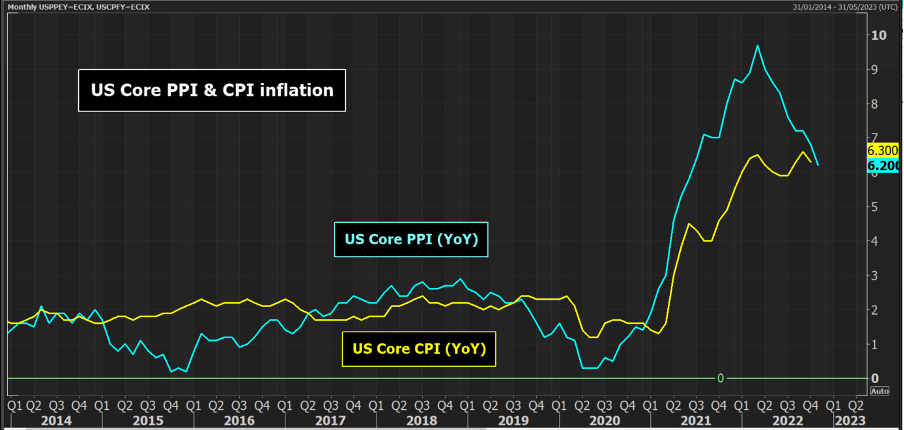What is the Producer Price Index?
The Producer Price Index (abbreviated to PPI) is an inflation measure that looks at the change over time in the prices experienced by domestic producers. The PPI is primarily the change in prices paid to producers for their output of goods and services.
The data is compiled from thousands of indexes and product categories. In the US the Bureau of Labor Statistics measures more than 10,000 product and price indexes to calculate the PPI every month.
PPI and CPI (Consumer Price Index) are both measures of inflation. The PPI looks at inflation experienced by industries and businesses. The CPI looks at the basket of goods and services paid for by the end consumer.
The PPI is domestic-related inflation and does not include the price changes of imported goods (unlike CPI).
PPI calculations
The PPI measures wholesale inflation. There can be different measures of PPI and it depends upon the country/region reporting the data as to how it is presented:
- PPI Input Prices measure the price changes in raw materials and commodities that are used in production. This is also known in the US as PPI First Demand.
- PPI Output Prices measure the price changes at the end of production. These can also be known as PPI Final Demand in the US. These are used for the headline PPI figure.
There are also core and headline measures of PPI (just like with the CPI). The Core PPI meaures the changes in selling prices of goods and services by producers but excludes food and energy costs.
Why is the PPI important?
The PPI has important links to CPI inflation (Consumer Price Index) which tends to be considered the main inflation measure for countries around the world. The trends of the prices at a wholesale level tend to not diverge for long from the price changes that consumers experience. Companies might swallow sharp rises in the prices of production for a short period, with a near-term hit to their margins, but eventually, price changes will be passed on to the consumer. There are links both ways to the PPI and CPI. The strength of market reaction can depend upon when the PPI is announced compared to the CPI data. The CPI is considered to be more important.

Financial markets reacting to the PPI
The PPI is not considered a tier-one data release. However, markets still react to the data. The reaction may be shorter-lived than the CPI data but still comes in the same way.
- Government bonds – A rise in the PPI suggests rising price pressures and inflation. This is negative for the outlook of fixed-income assets such as government bonds, sending yields higher.
- Currency – Under normal market conditions, higher inflation will increase the potential for higher interest rates. This will benefit the domestic currency.
- Equities – Higher inflation in the costs for producers and companies tends to be seen as a negative for equities. This is also due to the reaction function of the central bank which would likely move to raise interest rates. Higher rates make it more expensive for corporates to borrow.